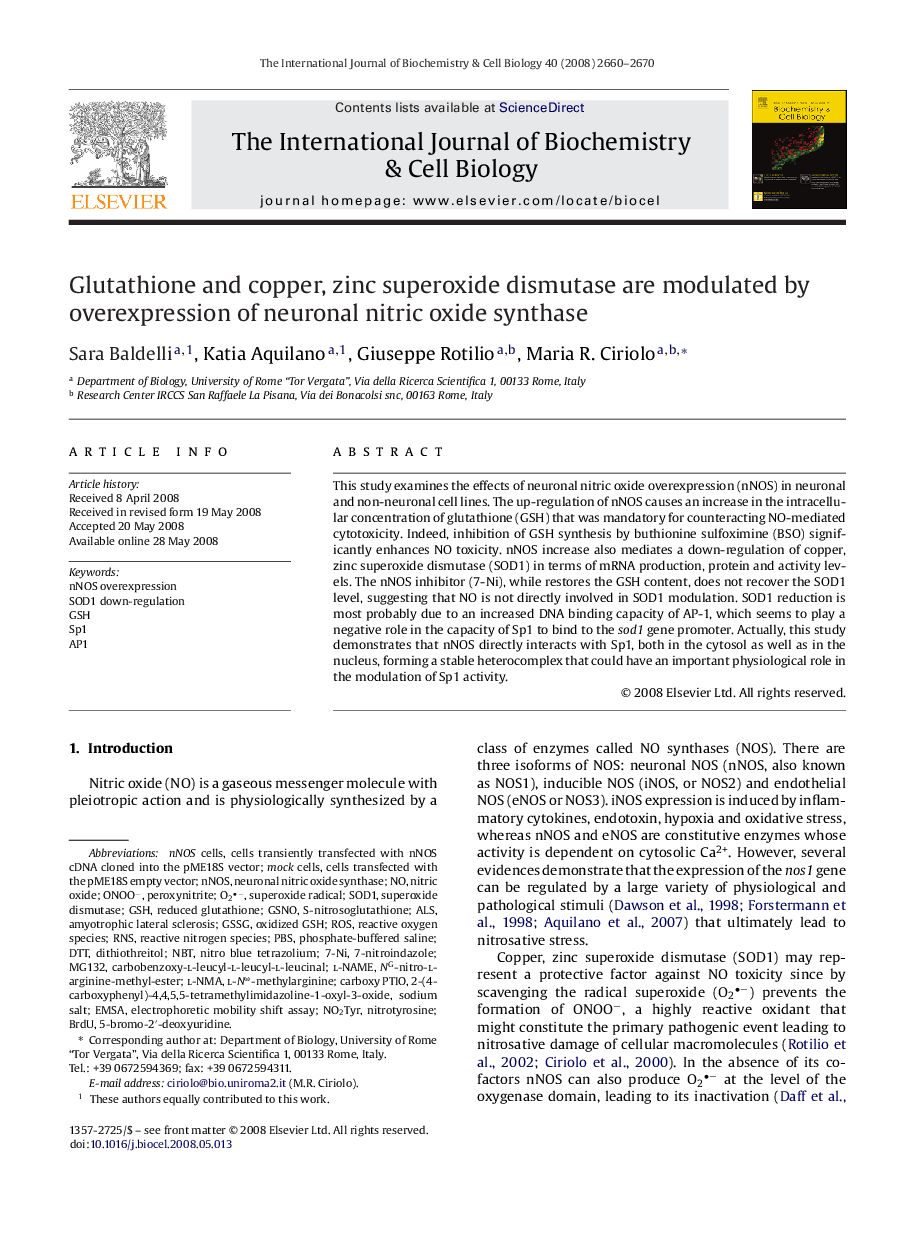| Article ID | Journal | Published Year | Pages | File Type |
|---|---|---|---|---|
| 1984788 | The International Journal of Biochemistry & Cell Biology | 2008 | 11 Pages |
This study examines the effects of neuronal nitric oxide overexpression (nNOS) in neuronal and non-neuronal cell lines. The up-regulation of nNOS causes an increase in the intracellular concentration of glutathione (GSH) that was mandatory for counteracting NO-mediated cytotoxicity. Indeed, inhibition of GSH synthesis by buthionine sulfoximine (BSO) significantly enhances NO toxicity. nNOS increase also mediates a down-regulation of copper, zinc superoxide dismutase (SOD1) in terms of mRNA production, protein and activity levels. The nNOS inhibitor (7-Ni), while restores the GSH content, does not recover the SOD1 level, suggesting that NO is not directly involved in SOD1 modulation. SOD1 reduction is most probably due to an increased DNA binding capacity of AP-1, which seems to play a negative role in the capacity of Sp1 to bind to the sod1 gene promoter. Actually, this study demonstrates that nNOS directly interacts with Sp1, both in the cytosol as well as in the nucleus, forming a stable heterocomplex that could have an important physiological role in the modulation of Sp1 activity.
